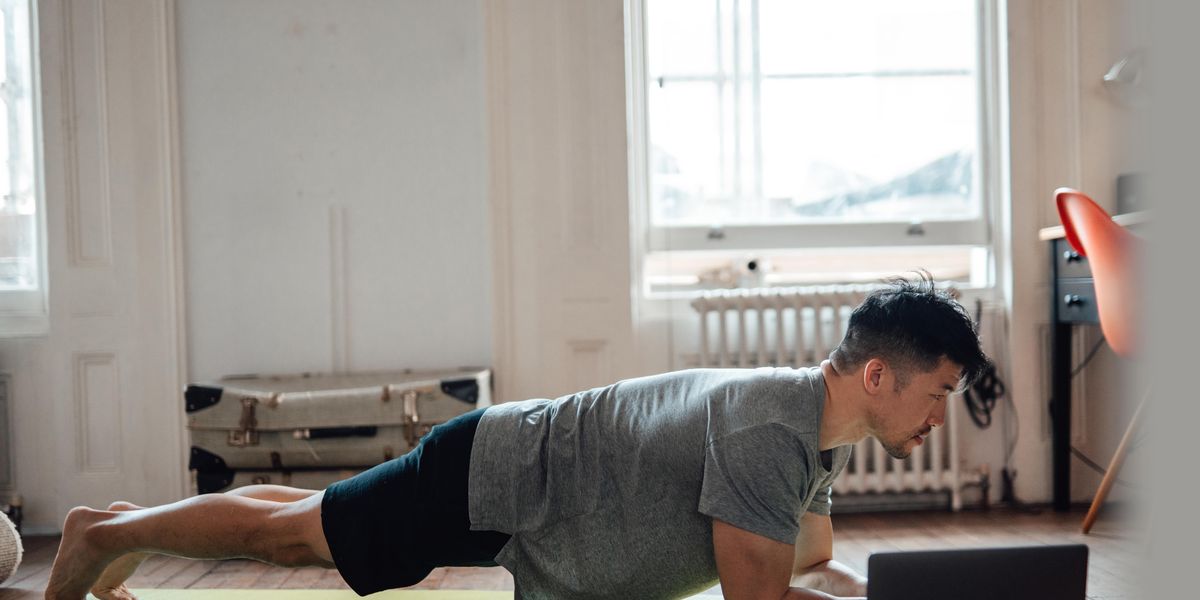Blood
The best way to lower your blood pressure? Planks and wall sits, according to new study
Engaging in ‘static isometric exercises’ – such as the plank, glute bridge, and wall sit – could prove beneficial in lowering blood pressure, according to a recent study published in the British Journal of Sports Medicine.
Researchers from Canterbury Christ Church University drew upon data from 270 clinical trials involving nearly 16,000 participants, revealing that static isometric exercises induced notable improvements in blood flow, which likely contributed to the observed reductions in blood pressure. The researchers also noted that other exercises, such as squats, press-ups, high-intensity interval training (HIIT), and cardiovascular exercises, had a positive impact on blood pressure, although their impact was less pronounced compared to static isometric exercises.
In the past, guidelines have recommended aerobic exercises like walking, running, and cycling as effective means to lower blood pressure. However, the research from this latest study suggests that these recommendations may be outdated, as they relied mainly on data predating the emergence of newer forms of exercise.
Interestingly, a secondary analysis found the most benefit was in those performing isometric wall squats and among runners.
What is isometric exercise?
An isometric exercise is a muscle-strengthening exercise (usually used in strength training) in which the muscle length does not change. For example, planks, wall sits, static lunges or holding a yoga pose like Warrior II.
Isometric exercise is as close as you can get to cheating your way to better blood pressure levels, says Dr Ben Kelly, specialist in preventative medicine and head of clinical research at Nuffield Health. ‘Isometric exercise, such as holding planks or squats, has been discovered to be a very effective tool in reducing blood pressure. And why is it cheating? It’s so easy you can do it in front of your favourite TV show. One type of isometric exercise can be performed by gripping a hand exerciser or anything that gives enough ‘pushback’ resistance to get results, such as a tennis ball.
‘It is possible to see positive results from isometric exercises in as little as five weeks,’ he continues. ‘When squeezing, you should aim to do so for two minutes at a time. Do this four times with each hand with a one to four-minute break between squeezes. Isometric exercises should only form a part of a wider approach to your fitness to have a real impact on your blood pressure levels.’
What are other ways to reduce my blood pressure?
1. Continuous moderate exercise
‘30-60 minutes of walking, swimming, jogging, cycling or rowing per day is great for reducing blood pressure,’ says Dr Kelly. ‘Don’t feel the need to jump into the deep end with these exercises – you should build up gradually. Aim to end up exercising three to five times per week at an intensity scale of five or six.’
2. Resistance (band) exercise
‘Strengthening exercises can be added to your workout to further help with blood pressure. These can be less frequent than cardio exercise, instead carried out two or three times a week. However, with high blood pressure, you should avoid using heavy weights or exercises that require you to change position too much (lying to standing, for instance). Resistance bands are a great tool for these exercises that won’t put you under any undue pressure,’ he adds.
3. Group exercise
‘If all the above sounds like a lot to fit in, think about signing up to a group exercise class. Chances are you’ll be doing a lot of points 2 and 3 without even realising it,’ he recommends.
4. Yoga
‘Research has shown that the combination of postures, breath control and meditation in yoga can contribute to a lowering of blood pressure,’ says Dr Kelly. ‘Try doing yoga in addition to the above exercises for the best chance at reducing blood pressure levels.’

